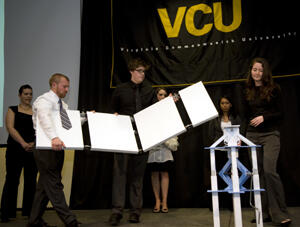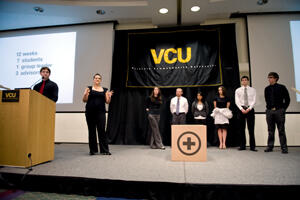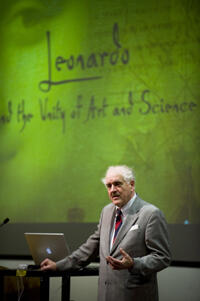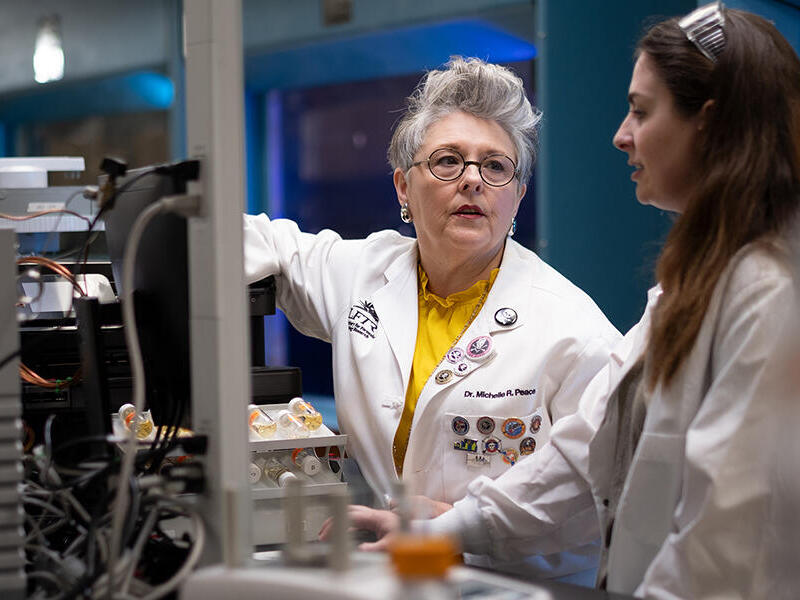April 16, 2009
Prototype phase of da Vinci Center project unveiled: Operating table for Third World countries for $500
Share this story

A group of Virginia Commonwealth University engineering, business and arts students has unveiled the prototype of a $500 operating table for the developing world — a 24-inch, easy-to-ship cube that assembles into a full-size, hospital-grade table that moves in three dimensions.
The students are working on the project through the VCU da Vinci Center for Innovation in Product Design and Development, a program that brings together students from VCU’s schools of Engineering, Business and the Arts.
The students represent the second group at the da Vinci Center to work on Operation Simple, the quest for an affordable operating table to fill a burgeoning need in developing countries. For optimal results in surgery, patients should be on a raisable, movable and partitioned operating table. However, a new standard operating table can cost up to $80,000, a prohibitive cost in developing countries that often forces health care providers to work with just one table.

“We wanted to build the table for $500, and the main difference between this table and a larger table is that it can be collapsed down for easy shipping and it comes in ready-to-assemble pieces,” said senior Michael Mercier, a mechanical engineering major from Herndon, Va. “It is very simple steps for the end user to complete.”
The students unveiled the table during VCU’s da Vinci Day celebration on April 15. The presentation was followed by a lecture from noted da Vinci scholar Bülent Atalay, Ph.D., of the University of Mary Washington, who discussed, “Leonardo and the Unity of Art and Science.”
The prototype table the da Vinci team conceived is in four pieces – a base, a simple scissor jack, an axle and the segmented bed top. The price constraint dictated that components be readily available and mass produced. It fits into a 24-inch, cardboard cube, marked with a circled cross on the outside and the words “Operation Simple.”

Senior Lauren O’Neill, a graphic design major in the VCU School of the Arts, said working on the design aspect of the project went beyond nuts and bolts and involved input at all stages of development.
“The nice thing about the VCU Arts program is that we go through a foundation here that prepares you for any kind of art and gives you the basic skills for problem solving,” she said. “The design component isn’t necessarily about product design specifically, but design in general and problem solving through design.”
Senior business major Jennifer Koch said a hybrid of for-profit and non-profit was selected for the business model.
“We had to kind of work backwards and work the business model to fit the needs of the table,” she said. “There’s definitely a need for the product and a lot of room for growth and expansion into other product lines.”
Also on the Phase II team are Mike Garrett, a design major; Chris Johnson, a mechanical engineering major; Skylar Roebuck, a computer engineering major; and Ana Cuison, a business and marketing major.

Phase I of the project involved a group of three students developing the concept for the table in Spring 2008. That team’s research included one member’s visit with hospital administrators in Bangladesh. Phase III will focus on production and marketing of the table and is to begin in Spring 2010.
“This project is one of the big reasons why I chose VCU over other schools when I applied,” Mercier said. “What drove me to VCU was the idea of bringing business and engineering together.”
Koch said the collaboration was invaluable. “I’ve never worked with an engineer before,” she said. “We all have such different knowledge and backgrounds and skills. The table would have been very different if just engineers or just designers or just business people had worked on it.”
O’Neill agreed, “We’ve been given skills that set us apart.”
Subscribe to VCU News
Subscribe to VCU News at newsletter.vcu.edu and receive a selection of stories, videos, photos, news clips and event listings in your inbox.









